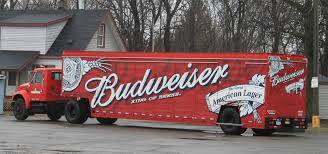FMCSA: More on Random Testing, Consequences and FMCSA Guidance in the
Regulated Trucking Industry.
The random alcohol testing regulation as stated in 49 CFR Part § 382.305 has the requirement for testing at a rate of 10% for the trucking industry. All these tests should be distributed evenly during the course of a year like it is for drug tests.
There are some conditions attached to doing random alcohol tests. These tests should be conducted ONLY at the following times:
- Immediately before the start of safety sensitive functions;
- During the performance of safety-sensitive functions; or
- Immediately following the cessation or completion of safety sensitive functions.
The rationale for this approach is the alcohol is considered legal to use in off-duty time but not permissible if the level of alcohol in a CDL holder above certain levels. There are two levels that are important for all holders of a CDL.
If the level of alcohol on a test is between 0.02 and 0.039 BAC, that is cause for immediate removal from safety-sensitive functions (i.e., no driving is allowed) for at least 24 hours. If the drivers regularly scheduled duty is less than 24 hours from the time of the alcohol test, the driver is not allowed to operate a CMV until a minimum of 24 hours have elapsed. There is no referral to the Substance Abuse Professional (SAP) when the alcohol level is less than 0.04 BAC
If a CDL holder has an alcohol test result that is 0.04 or greater, the drivers is immediately removed from safety-sensitive duties. The drivers at the time is to be given a list of the names and contact information for SAP’s. The driver cannot be placed in a safety-sensitive positon until all the requirements as stipulated by the SAP have been successfully completed and the driver has passed a Return–to-Duty (RTD) drug and/or alcohol test.
It is required that any safety sensitive individual who has an alcohol test violation (i.e. 0.04 BAC or greater) has to be given the names and contact information for SAP’s ( a list, that means at least 2)0.04,m. It is up to the individual to contact the SAP and make all arrangement to visit the SAP and make payment arrangements. The company is absolved of all responsibility in making an appointment or paying for any and all costs for the SAP and other treatment costs.
It should be noted that there is nothing in the regulations that require the company to retain the driver and that employment can be terminated even with an alcohol test result greater than 0.02 and less than 0.04 (BAC). That termination clause should clearly be noted in the company’s policy and that the driver has been made aware of consequences of having alcohol detected in their body. It is advised that the policy awareness statement be done in writing and that the driver sign that policy awareness statement upon being employed and being placed behind the wheel of a CMV.
Companies should note that the same above conditions apply to a driver who has a drug test violation; i.e., non-negative drug test, adulterated or substituted specimen as reported by the Medical Review Officer (MRO). This same action also applies if the driver has refused to take a required drug test, i.e., report to the collection facility in a timely manner. The company is under no obligation to retain drivers who violate the company’s drug and alcohol testing policy. The random drug testing regulation has the requirement for testing at a rate of 50% for the trucking industry.
The next article in this series will explore more of the fascinating world of random drug and alcohol testing.
Contact Information for Substance Abuse Professional:
NATIONWIDE PROVIDERS OF SUBSTANCE ABUSE EVALUATIONS
American Substance Abuse Professionals
1421 Clarkview Road, Suite 130
Baltimore, MD 21209
Ph: 888.792.ASAP (2727)
Fax: 410.889.6234
Email: info@go2asap.com







